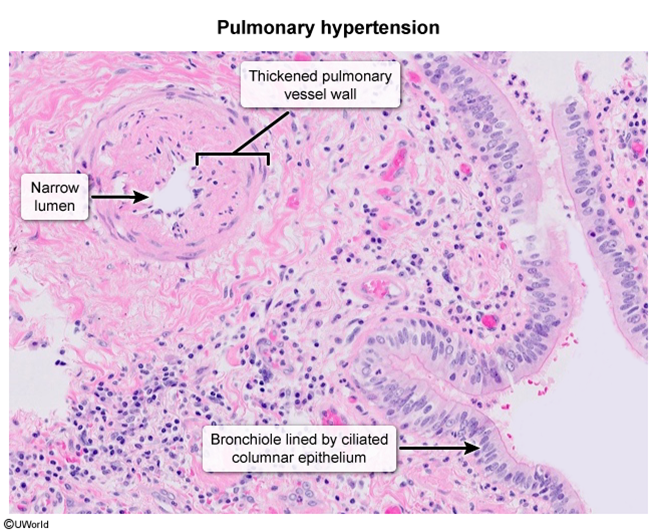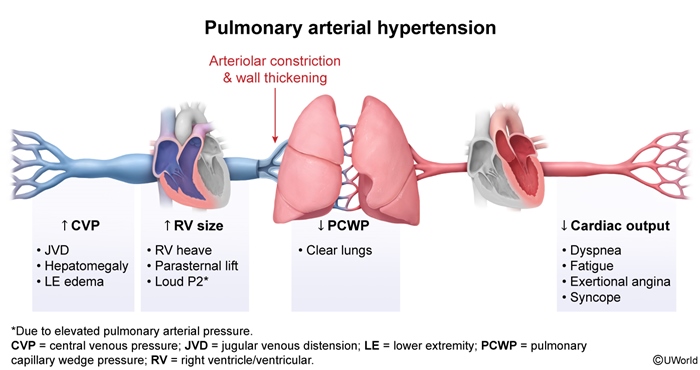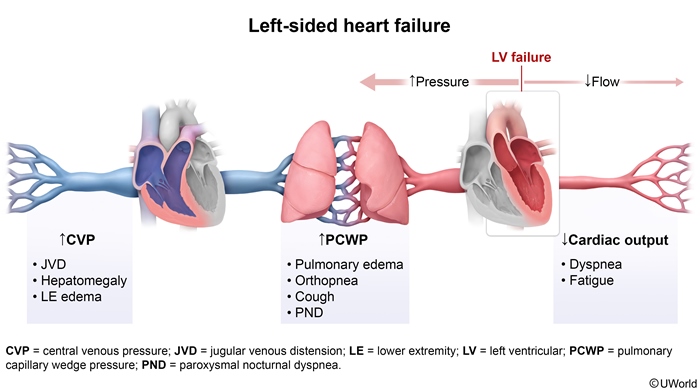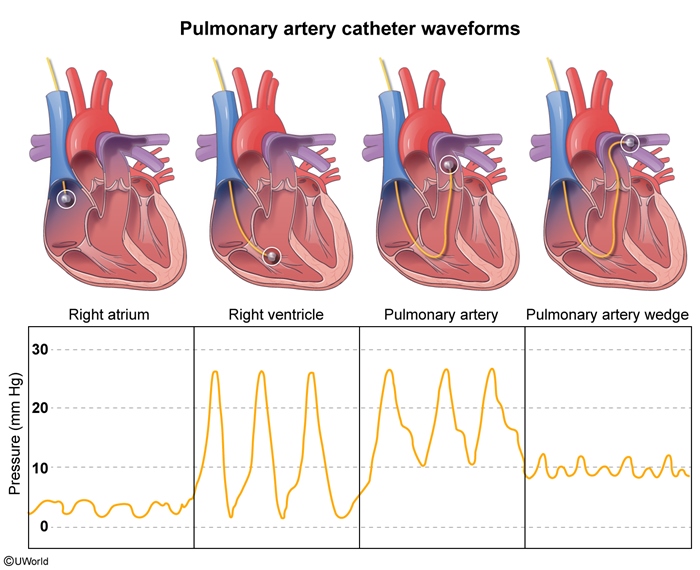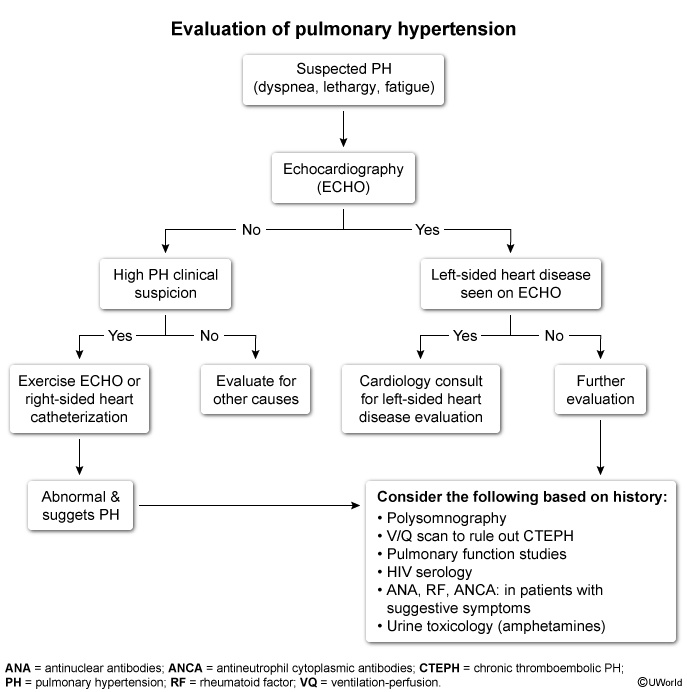Pulmonary Hypertension
Article Sections
Introduction
Pulmonary hypertension (PH) refers to approximately 50 conditions that increase pulmonary artery pressure (PAP), with a common final pathway of progressive right ventricular failure, carrying high morbidity and mortality. The formal definition of PH (which has evolved over time) is a mean PAP ≥20 mm Hg.
Pathophysiology
Normally, the pulmonary circulation (ie, vessels from the pulmonic valve to the left atrium) is a low-pressure system, flowing at ~1/6th of systemic pressures. The low pressure is made possible by highly compliant, distensible pulmonary vessels. PH involves several mechanisms:
- Vasoconstriction: Pulmonary endothelial dysfunction leads to imbalance between endogenous vasoconstrictors (↑ endothelin-1) and vasodilators (↓ nitric oxide and prostacyclin)
- Vascular remodeling: Smooth muscle cell proliferation, neointimal hyperplasia, extracellular matrix deposition, inflammatory cell infiltration, and microthrombosis in situ
Continue Learning with UWorld
Get the full Pulmonary Hypertension article plus rich visuals, real-world cases, and in-depth insights from medical experts, all available through the UWorld Medical Library.
Figures
